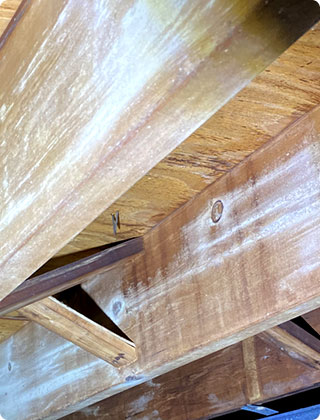
White Mold in the House: Is It Dangerous?
White mold is a common issue faced by homeowners, caused by various fungi that can pose significant health risks if not promptly addressed. Understanding what white mold is, its potential dangers, and the importance of regular mold inspection and testing are crucial steps in maintaining a safe and healthy home environment.
What Is White Fuzzy Mold?
White fuzzy mold is a term used to describe different types of mold that appear white on surfaces. Common molds with a white appearance include Aspergillus, Cladosporium, and Penicillium. These molds thrive in areas with high moisture content, such as basements, bathrooms, and damp corners of the house.
Is White Mold Dangerous?
While white mold may not be as widely recognized as toxic black mold, it can still pose health risks and structural concerns. It's important for homeowners to be aware of these potential dangers associated with white mold to take proactive measures to manage and mitigate any risks posed by its presence.
Health Implications
Exposure to white mold can lead to various health problems, including respiratory issues, allergies, and skin irritation, especially with prolonged exposure. Addressing white mold promptly is essential to protect the health and well-being of household members and prevent these health risks from escalating over time.
Identification Challenges
One of the challenges with white mold is its ability to blend in with light-colored surfaces, making it difficult to detect. While white mold may not carry the same immediate health dangers as black mold, it is not benign. Homeowners should remain vigilant and address any signs of white mold growth promptly to ensure a safe and healthy living environment for themselves and their families.
Where is White Mold Commonly Found in Homes?
White mold tends to grow in areas with high humidity and poor ventilation. Here are some common places where white mold can be found in houses:
White Mold in the Basement
Basements are prone to moisture buildup, making them an ideal environment for white mold growth. Insufficient airflow and dampness contribute to the development of mold colonies in these areas.
White Mold on Walls in House
Moisture seepage, leaks, or condensation on walls can create a conducive environment for white mold growth. It is essential to address any water intrusion issues promptly and ensure proper ventilation in affected areas.
White Mold in Furniture
Upholstered furniture, such as couches and mattresses, can harbor white mold if exposed to moisture. This can be a result of spills, high humidity, or prolonged dampness.
It is important to note that these are general areas where white mold can commonly be found, but it can also appear in other parts of the home where moisture and favorable conditions exist.
The Importance of Mold Inspection and Testing
Detecting and addressing white mold early is crucial for maintaining a healthy living environment. Professional mold inspection and testing services can help identify mold presence, assess the extent of contamination, and recommend appropriate remediation measures. Here's why you should consider mold inspection and testing:
Early Detection
Mold inspection and testing can detect mold growth in its early stages, even if it's not visible to the naked eye. Early detection allows for prompt action, preventing further spread and potential health risks.
Accurate Identification
Professional testing helps accurately identify the type of mold present in your home. Different mold species require different remediation approaches, and accurate identification ensures effective treatment.
Comprehensive Assessment
A thorough mold inspection assesses all areas of your home, including hidden spots like behind walls and under flooring. This comprehensive assessment ensures that no mold is left untreated.
What to Do If You Discover White Mold
If you discover white mold in your home, the best course of action is to promptly call a professional mold inspection and testing service, such as O2 Mold Testing. These experts have the necessary tools and knowledge to accurately identify the type of mold present and assess the extent of the infestation. Their thorough inspection will provide you with an accurate assessment of the situation and guide you on the appropriate steps to take to address the mold issue effectively.
Take Action Against White Mold: Professional Assistance Matters
White mold can be a significant concern for homeowners, potentially causing health problems and structural damage if left untreated. Understanding what white mold is, where it commonly occurs in houses, and the importance of professional mold inspection and testing is crucial for maintaining a safe and healthy living environment. By following the recommended steps and preventive measures, you can mitigate the risks associated with white mold and maintain a mold-free home.
If you are dealing with white mold in your house, contact O2 Mold Testing for professional mold inspection and testing services. Do not let mold compromise your health and home. Reach out to us today!


